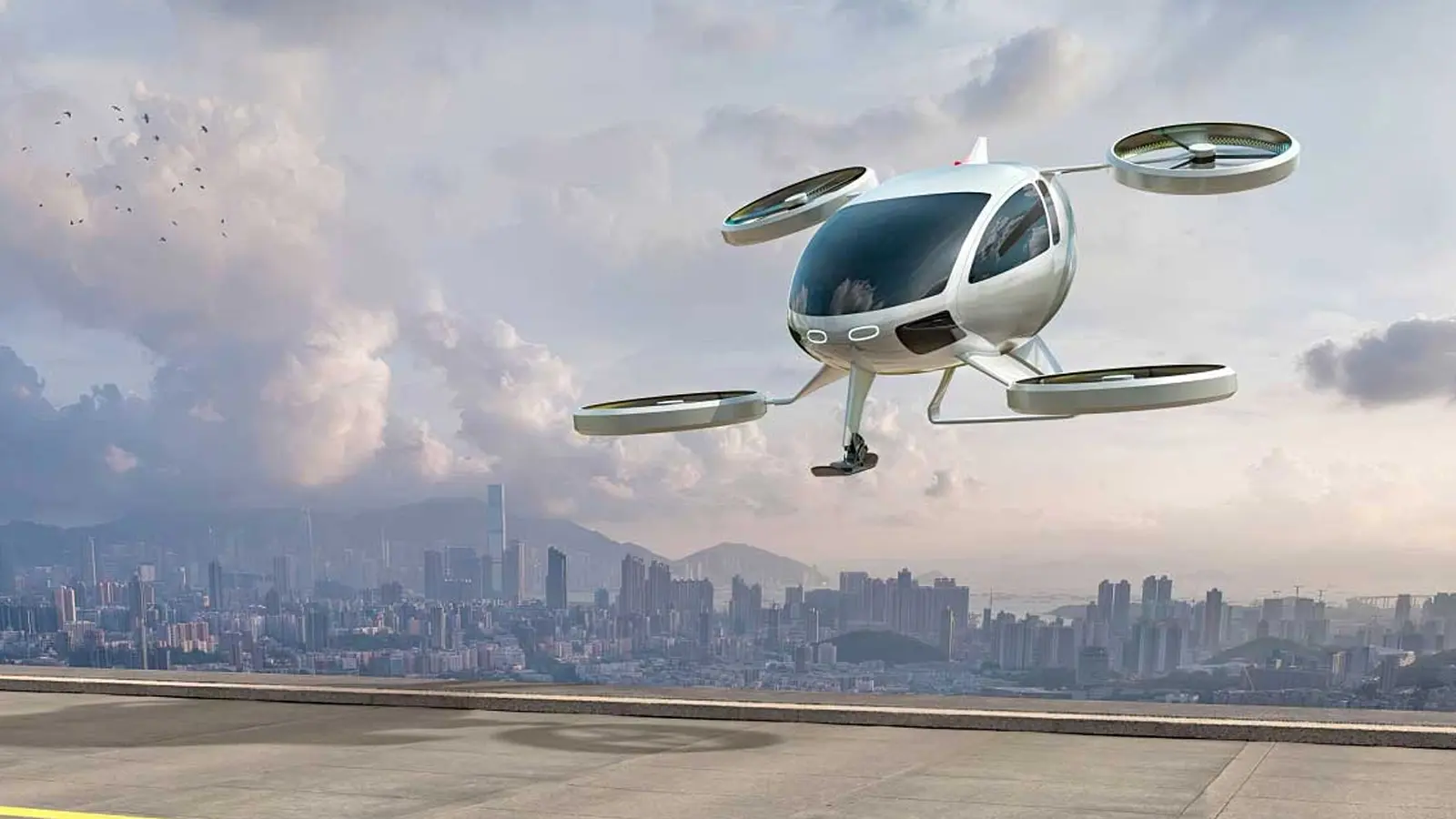Considering passenger safety for eVTOL aircraft

Considering passenger safety and lighting requirements for eVTOL aircraft
Passenger carrying air taxis have been a hot topic for years. They have always seemed like the prospect of a distant future – something you would see in a megacity 100 years from now… but they’re here, and they’re ready for take-off at next year’s Paris Olympics.
The questions that come with electric vertical take-off and landing (eVTOL) aircraft are plentiful. Are they really a viable way of transporting people around major cities? What will the charging infrastructure look like? And, perhaps most importantly, what will their safety protocols look like?
That last question is the one that we at STG Aerospace are most interested in, and the one that Business Unit Director Dr Sean O’Kell has been investigating.
Emergency Lighting
While we certainly hope that disaster never strikes, all aircraft – no matter their size – must be prepared for emergency evacuation and passengers must be aware of where their exits are, and how to use them, in any conditions. Our photoluminescent technology allows OEMs to meet their design goals with the lowest possible weight and power consumption, making it perfect for eVTOL aircraft.
But there are questions left to be answered on safe emergency evacuation. eVTOL aircraft operate as a hybrid between fixed-wing aircraft and rotorcraft, depending on the phase of flight – during take-off and landing they behave similarly to a CS29 helicopter, but while cruising they are more akin to CS23 fixed-wing aircraft. So, where do they fit into the certification authorities’ classifications?
A hybrid aircraft will require a hybrid solution – one that treats each phase of flight differently. This is especially important during take-off and landing, where eVTOL aircraft operate as crew-less helicopters and must rely on passenger input or automated systems to ensure safe evacuation, irrespective of design approach.
But we can’t rely too much on likening eVTOL aircraft to rotorcraft because of the radicality of their design, and so evacuation procedures may differ vastly from existing systems. We must also consider the possibility of autonomous flying taxis at some point in the future, as eVTOL aircraft become more and more prevalent.
While aircraft will be piloted at next year’s Paris Olympics, true autonomous aircraft will require brand-new approaches and will have different emergency lighting requirements to assist disoriented, potentially naïve, passengers in an evacuation scenario. OEMs and certification authorities must, therefore, begin planning for this now, and we must ensure that there is a level playing field in terms of regulatory requirements and safety standards throughout the continued development of eVTOL aircraft, both piloted and autonomous.
Cabin Lighting
Beyond safety requirements, the passenger experience must also be carefully considered. eVTOL aircraft will service a wide range of audiences, from utilitarian air taxis at next summer’s Olympic Games to premium short-range VIP transport through the hills of Hollywood in the future – not dissimilar to the variety and diversity of road transport we see in our cities today.
The cabin design of eVTOL aircraft will need to reflect this positioning, while still considering the same weight and power consumption requirements as mentioned above. Cabin lighting is a critical part of the flight experience as it must work to create a high-quality, durable and functional environment, which will play a key role in getting passengers to buy into a new form of air travel.
In summary
The responsibility for determining the regulatory implementation and requirements for eVTOL aircraft lies with the certification authorities. STG Aerospace is strongly positioned to cater to this burgeoning and thrilling market. We provide lightweight and powerless photoluminescent signage specifically designed for emergency scenarios. Additionally, our versatile lighting solutions offer a universal lighting family that can elevate the cabin experience. The opportunity to tackle novel and exhilarating challenges in order to craft a completely new flight experience, one that is both secure and refined, holds tremendous allure.
